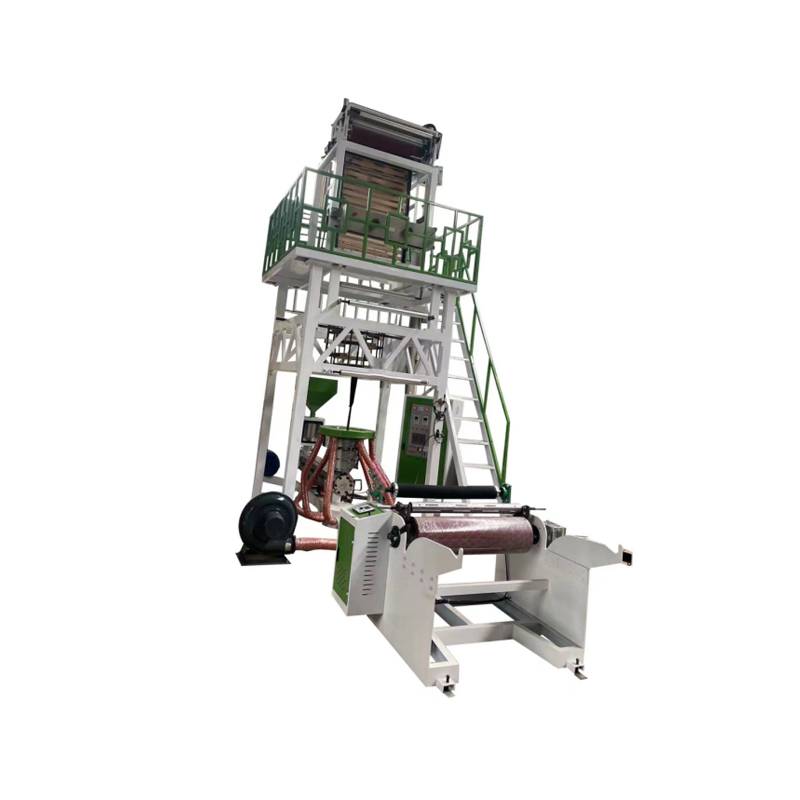Low Pressure Blown Film Machines: Unlocking New Opportunities in Flexible Packaging Production
 By Admin
By Admin
In the fast-evolving flexible packaging sector, equipment that balances efficiency, material versatility, and cost-effectiveness is highly sought after. The Low Pressure Blown Film Machine has emerged as a valuable solution, particularly for manufacturers aiming to produce high-quality films while optimizing energy consumption and operational costs. Distinguished by its ability to process a wide range of materials at lower extrusion pressures, this technology supports diverse application scenarios across packaging, industrial, and specialty film markets.
Specialty Packaging: Ideal for Sensitive and Delicate Films
Low pressure blown film machines excel in producing films from polymers that require gentle processing conditions. This capability opens doors to specialty packaging sectors where film properties and material integrity are critical.
Biodegradable and compostable films: Materials such as PLA, starch-based blends, and PBAT often degrade or discolor at high temperatures and pressures. Low pressure extrusion ensures these polymers maintain their physical and aesthetic properties, producing environmentally friendly films suitable for compostable bags, produce wraps, and disposable packaging.
Thin-gauge films for fresh produce: Films designed to balance breathability and protection for fruits and vegetables can be produced with precise control over gauge and clarity, enhancing shelf life and consumer appeal.
Pharmaceutical and medical packaging: Sensitive films used in sterile packaging and medical disposables require strict control of film thickness, sealability, and cleanliness. Low pressure blown film machines offer stable processing conditions that preserve material performance and comply with regulatory standards.
Cost-Effective Production of Commodity Films
Beyond specialty applications, low pressure blown film machines are widely adopted for producing high-volume commodity films with reliable quality and low operational costs.
Standard polyethylene bags: From shopping bags to garbage liners, these films benefit from the machine’s energy-efficient operation and stable extrusion process, yielding consistent thickness and mechanical strength.
Construction and protective films: Films used for temporary surface protection, dust covers, and vapor barriers are often produced on low pressure lines that optimize throughput while maintaining toughness and durability.
Agricultural films: Low pressure extrusion helps produce mulch films and silage wraps with enhanced flexibility and UV resistance, supporting longer service life and improved crop yields.

This segment appreciates the balance low pressure machines strike between speed, quality, and energy consumption.
Flexible Film Structures and Multi-Layer Co-Extrusion
A notable advantage of some low pressure blown film machines lies in their capability to handle multi-layer co-extrusion processes, which allow the creation of films combining different polymer layers to achieve desired barrier, strength, and seal properties.
Barrier films for food packaging: Multi-layer films incorporating EVOH, nylon, or biodegradable barrier layers enhance shelf life for perishable products without relying solely on plastics that require higher processing pressures.
Laminated films: Combining layers of differing functionality—such as moisture barriers with heat seal layers—is possible with low pressure extrusion, producing films suited for complex packaging formats like stand-up pouches and vacuum bags.
Customizable layer thickness: Precise layer distribution control supports tailored film properties, enabling converters to meet specific product protection or branding needs.
This versatility expands the scope of low pressure blown film machines far beyond basic film production.
Environmentally Conscious Manufacturing
With increasing global emphasis on reducing carbon footprints and waste, low pressure blown film machines offer inherent environmental benefits:
Lower energy consumption: Operating at reduced extrusion pressures means less power is required, translating to cost savings and reduced greenhouse gas emissions.
Compatibility with recycled content: The gentler extrusion conditions are better suited to processing films that include recycled polymers, which often degrade under high pressure, thus supporting circular economy initiatives.
Reduced thermal degradation: Lower temperatures and pressures decrease the risk of polymer breakdown, improving film quality and reducing off-spec material waste.
These advantages align with sustainability goals while maintaining production efficiency.




